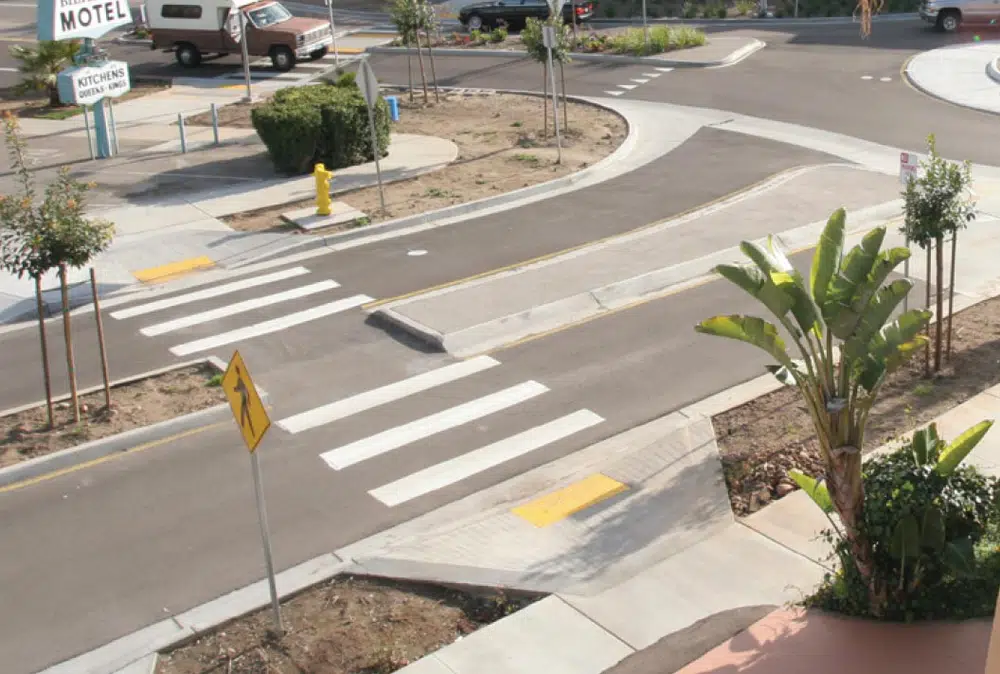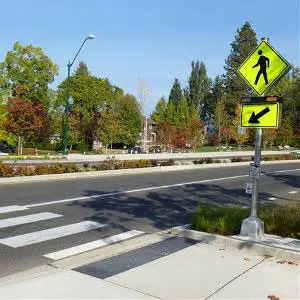A record number of pedestrians and cyclists were killed in car crashes in 2020, according to the most recent data available from the National Highway Traffic Safety Administration.
This historical high occurred along with increases in fatal car crashes overall, despite a decrease in vehicle miles traveled for the year.
Making streets more accessible to walking and biking can improve community health, increase interactions between residents, and improve local economies. However, without infrastructure to support pedestrians and cyclists alongside drivers, walking and biking can be dangerous.
In the most recent National Household Transportation Survey, 10.5% of trips in the US were walked, and 1% were biked. However, pedestrian deaths made up around 16% of traffic crash victims, and cyclists made up 2.4% of traffic crash victims.
How do pedestrian and cyclist deaths compare over time?
In 2020, 6,516 pedestrians died in traffic crashes, and 938 cyclists died. Those figures were about a 4% increase in pedestrian and cyclist deaths from the previous year. This increase occurred despite a 12% decrease in vehicle miles traveled in 2020.
Nationally, 6,516 pedestrian deaths amounted to 1.98 pedestrian deaths per 100,000 people.
Which states had the highest or lowest pedestrian and cyclist fatality rates?
The pedestrian fatality rate varied by state, with the highest rate in New Mexico at 3.75 pedestrian deaths per 100,000 people and lowest rate in Maine at 0.67 pedestrian deaths per 100,000.
Nationally, the cyclist fatality rate was around 14% of the pedestrian fatality rate at 0.28 cyclist deaths per 100,000 people. This figure was the highest in Florida (0.78 deaths per 100,000) and Louisiana (0.73 deaths per 100,000). Montana and South Dakota didn’t record any cyclist deaths in 2020.
While a higher number of these deaths occur in cities, the fatality rate is lower in some cities than the national average. Phoenix and Dallas had two of the highest pedestrian fatality rates in the country, whereas New York City’s fatality rate was around half the national rate.
An audit of pedestrian safety in Dallas found that limited resources and funding have resulted in unmaintained crosswalks and pedestrian traffic signals. Poor infrastructure in addition to road designs that prioritize speed can be dangerous for pedestrians.
A study of pedestrian and cyclist crashes in Phoenix identified roadway and land-use characteristics that make crashes more common. Limited crossing opportunities, frequent driveway access, and old signal equipment were common characteristics of roads with many crashes.
What factors influence pedestrian and cyclist deaths?
Police accident reports often cite a failure to obey traffic laws as causes for fatal pedestrian or cyclist deaths. These laws include motorists not yielding the right-of-way, improperly crossing streets by pedestrians or missing traffic signs.
Additionally, alcohol or drug use was reported as a factor in 10.5% of pedestrian deaths, and 5.7% of cyclist deaths. However, police reports are limited by eye-witness accounts, and are heavily influenced by the offending driver’s perspective.
A 2020 estimate by the National Highway Traffic Safety Administration found that an estimated 31% of pedestrians and 16% of drivers involved with fatal pedestrian crashes had blood alcohol contents above the legal limit for drivers.[1] While not all such deaths were attributed to alcohol influence in police reports, nearly half of pedestrian fatalities involved at least one person who had consumed alcohol prior to the crash.
About 77% of pedestrian deaths also occurred in the dark. Not being visible to drivers was a common factor for both pedestrian and cyclist accidents.
How can pedestrian and cyclist deaths be prevented?
Practical infrastructure improvements can contribute to pedestrian and biker safety. Adding or improving sidewalks and bike lanes can make it safer to walk or ride. Other strategies to improve safety often revolve around reducing vehicle speed, improving visibility or providing more information to help in decision making.
The speed of a car is a key risk factor for fatalities. According to the Federal Highway Administration, pedestrians hit by cars going 50 miles per hour have a 75% chance of being killed; that likelihood decreases to 25% for cars going 32 miles per hour. Infrastructure improvements such as curb extensions or protected bike lanes can reduce the probability of full-speed vehicle collisions with pedestrians or bikers.
Pedestrian crossing islands can help those with limited mobility cross a street safely. Better signage, including rectangular rapid flash beacons on pedestrian signs and pedestrian countdown timers, can improve pedestrian decision-making and visibility.

Pedestrian refuge islands result in a 56% decrease in pedestrian crashes. (Dan Burden via Department of Transportation)

Rectangular rapid flash beacons increase motorist yielding rates (Toole Design Group via Arizona Dept of Transportation)
The Centers for Disease Control and Prevention and the Department of Transportation promote these types of infrastructure improvements through the Complete Streets planning principles. These guidelines encourage cities and towns to improve traffic safety by designing and maintaining transportation systems with the needs of pedestrians and cyclists in mind alongside driver and transit rider needs.
Read more about traffic accident data, the government’s role in infrastructure, and get the facts every week by signing up for our newsletter.
[1] The legal alcohol limit is .08 grams per deciliter.







